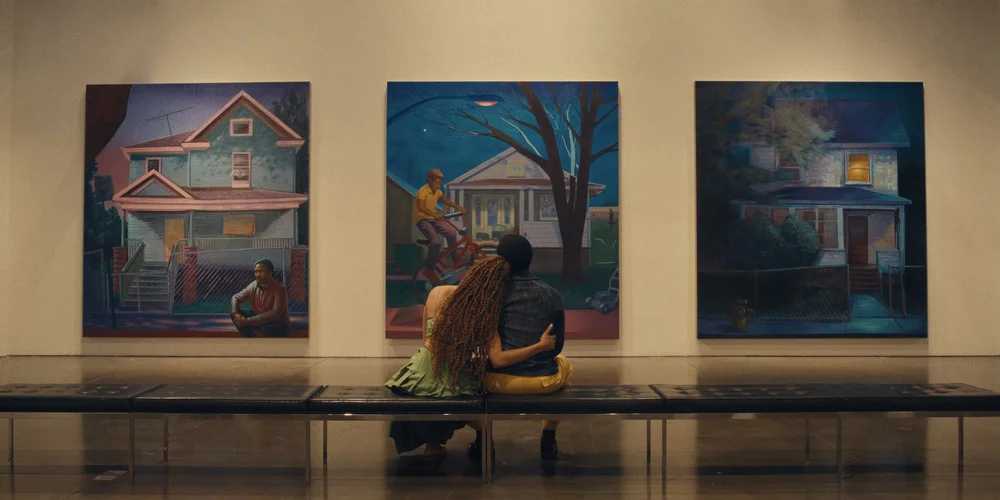
Images courtesy of Roadside Attractions
EXHIBITING FORGIVENESS– 5 STARS
While many film directors have experience or a previous upbringing in other artistic methods like drawing or photography, their chosen discipline has become the art of the moving image with its specific processes, techniques, and tools. To put it frankly, it’s not a medium one can learn, tame, or master overnight. Yet, every now and then, a rare, new talent comes along and rocks the cinematic medium with their voice and eye to make something intricate look natural and easy, like they’ve been doing it for years. Beginning at this most basic level of fabrication, Exhibiting Forgiveness was made with special and unique hands compared to most movies.
Exhibiting Forgiveness is the film directorial debut of the contemporary award-winning painter Titus Kaphar, who has his striking work displayed in public museums and collections around the world including three pieces at the Museum of Modern Art in New York City. His paintings commonly feature historical reconfigurations of Black American subjects, sometimes with intentionally washed-out, streaked, or cut-out portions. Like all great art, his paintings contain a tangible story behind the still images. Exhibiting Forgiveness inventively adds the layers of filmmaking and narrative storytelling to craft character studies around Kaphar’s own provided imagery.
The work done by artists is expressive, but the artists themselves are not always as expressive as their renderings. A case in point is the successful middle-aged painter Tarrell, played by Moonlight and High Flying Bird star André Holland. Echoing the line of “If I’m afraid at all, it’s only in my dreams” written in the Maya Angelou children’s book Life Doesn’t Frighten Me at All that Tarrell reads to his young son Jermaine (Daneil Michael Barriere), our lead counts as a tortured artist. His recurring nightmares from childhood trauma will wake him up in feverish rushes and cause great concern for his ultra-supportive performing artist wife Aisha (The United States vs. Billie Holiday Oscar nominee Andra Day). As a semi-therapeutic and profitable outlet for the distress, Tarrell uses the lasting mental images as material for his vertical mural canvases.
LESSON #1: COPING THROUGH ART– After seeing exercises of pulling memories out during his in-studio process, Tarrell’s latest series of paintings illustrate scenes of children at play or hired work being done on or in front of sidewalks and home fronts from the rougher neighborhoods of northeastern New Jersey’s Union County. Tarrell’s extra and evocative flourish is to alter the idyllic figures as if these are ruined memories. The truth is they are exactly that, and his mother– “Mama” Joyce, played graciously by Origin star Aunjunae Ellis-Taylor– still lives in those nearly-ramshackle parts.
Exhibiting Forgiveness descends on a weekend where Tarrell has brought his family to Joyce to help her pack up her belongings for a permanent move into Tarrell’s comfortable and lavish suburban home. His return to town brings forward La’Ron, his estranged and formerly homeless father, played by Tony Award-nominated stage actor John Earl Jelks, that he has not seen or spoken to in 15 years. For six months now, La’Ron’s been clean and sober from using, hitting church and scripture hard, and healing up from broken ribs sustained trying to thwart a convenience store robbery.
Even the mere nearby presence of La’Ron causes a flooding mood change and rancorous confrontational attitude in the normally demure Tarrell. There’s no mistake that his father is the cardinal source of his pain and fertile motivation, as the son refuses to see or acknowledge a changed father trying to stand before him. Difficult flashbacks and flickers, featuring Jelks paired with newcomer Ian Foreman as a younger Tarrell, extend into longer sequences and more revelations as Exhibiting Forgiveness continues.
LESSON #2: ART INFORMING ART– Several thematic parallel elements at work in Exhibiting Forgiveness constitute art informing art. Andra Day’s capacity as a singer/songwriter comes through her character Aisha as her songs become an audible ying to Tarrell’s visual yang in their shared lives. Day’s poignant main theme song “Bricks” exhales all the tension and deserves immediate awards consideration this winter. Additionally, their home and studios are peppered with books of notable artists who have inspired the director and dozens of background samples of other Black modern art. Highest of them all is Titus Kaphar’s own paintings stemming from extremely personal concepts. He has put those into Tarrell’s hands to be the storytelling manifestations.
LESSON #3: HOMES AS FACES AND FACADES– The symbolism goes even further on the artistic and storytelling levels. The central paintings depict youthful moments happening in the fronts of houses, each with their unique porches, patios, steps, windows, or here-and-there symmetry and asymmetry. By design, those constructed home components are supposed to be welcoming features from visiting points of view. Instead, the paintings and their purposefully-warped features furnish those domestic facades to be dark places confining the unearthed and terrible family history of Tarrell and company in Exhibiting Forgiveness.
Showing these visual motifs on film is one thing. Moving them is another. Minari cinematographer Lachlan Milne guides precision framing across intimate art-in-action close-ups and the wider horizontal truck or vertical boom camera moves that establish on-location scenes. In a deft merger of mediums, Kahpar’s sizable canvases often appear initially as stylized backgrounds containing the cast in the foreground, only to be physically pushed or slid away to introduce or reveal the matching real-life New Jersey setting sources.
This stacked effect to showcase the dichotomous roots between image inspiration and plot history, combined with a sumptuous musical score by orchestral pop composer Jherek Bischoff, is engrossing and nothing short of brilliant. Where one’s eyes and ears are easily impressed by Exhibiting Forgiveness building a bridge between visual art and filmmaking, it is the heart that is stirred even greater. The fact a non-screenwriting painter such as Kaphar also wrote this evolving and transformative movie beyond the panorama adds to the astonishment. This man went to an agonizing place and came away with both passionate poetry and eloquent splendor.
LESSON #4: MAKING PEACE WITH FAMILY– As the title suggests, forgiveness is the behavior, feeling, and ideal being made to matter the most, and rightfully so. The spirtually-steeped Joyce leans on and implores the promise of Matthew 6:14-15 hard, which reads:
For if you forgive other people when they sin against you, your heavenly Father will also forgive you. But if you do not forgive others their sins, your Father will not forgive your sins.
Her decree is for father and son to make peace and ensure their heavenly fates. Tarrell has come to learn bad memories have “saturated” more than good ones. Against his mother’s sermonizing, the validly resentful Tarrell can only reply “Why do you keep forgiving him?” to the woman who has blocked out too much of the ugly past filled with La’Ron’s egregious mistakes of antiquated parenting and abusive mentorship. True to her immeasurable screen presence of dignity, Aunjunae Ellis-Taylor makes the most of this supporting performance trying to instill storge love where it’s been long lost.
LESSON #5:THE TENUOUS RELATIONSHIP BETWEEN FATHER AND SON– The centerpiece crevasse of shredded trust and emotional damage that must be crossed and restored in Exhibiting Forgiveness belongs to Tarrell, La’Ron, and the honest performances of their casted actors. Conveying inner blazes of hurt, disdain, and guarded self-protection inside a shell of creative refinement, André Holland goes far above a typical arc where jadedness turns too easily to petulence. Through Holland’s strength clutching a broken composure, Tarrell’s stances and principles do not make the path to catharsis a foregone conclusion. That’s because across from him is the potent work of John Earl Jelks as the massively flawed patriarch. The range of fear battling defeat conveyed by Jelks is both frightening and sublime.
Lifted by some other taller stump, Exhibiting Forgiveness could have turned into a message movie with pontificating commentary trying to address wider societal issues. Instead, Titus Kaphar wisely kept the power focused on this single family unit, knowing the enveloping intimacy found there was more than enough to speak volumes of trueness and relatability to anyone watching. Exhibiting Forgiveness is as emphatic and resonating of a father-son conflict as any other in recent memory. For many, it will stick with you and hit home like a sledgehammer. More than everything, all of this hurt is worth every reflective second of the artistically melded experience.

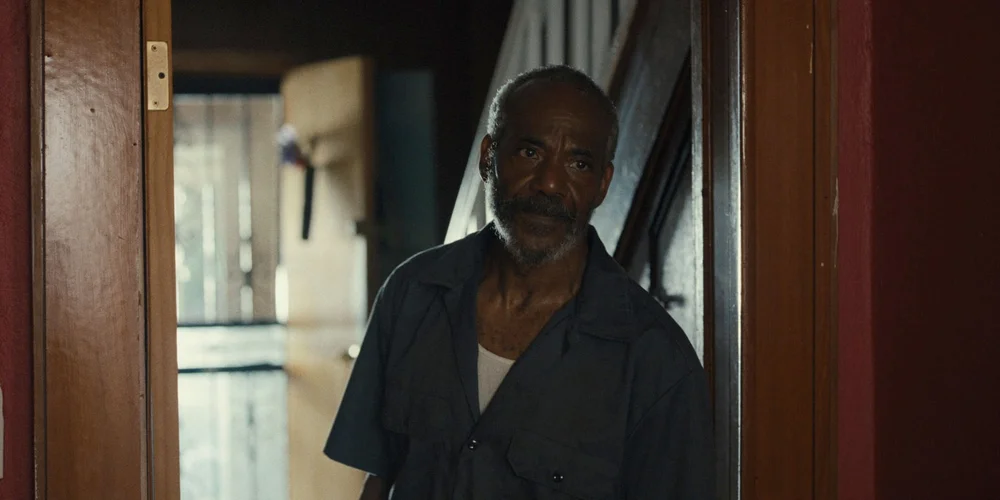

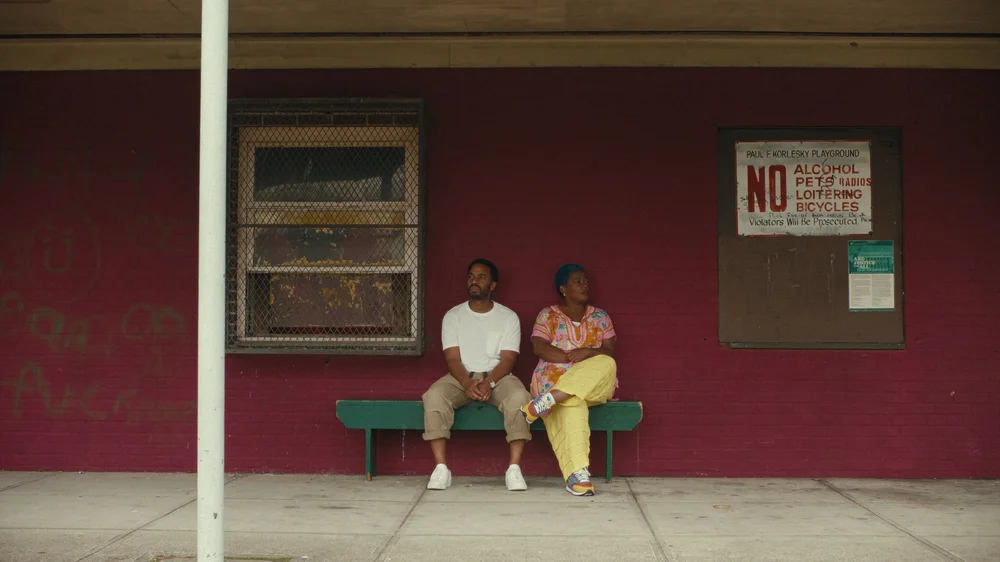
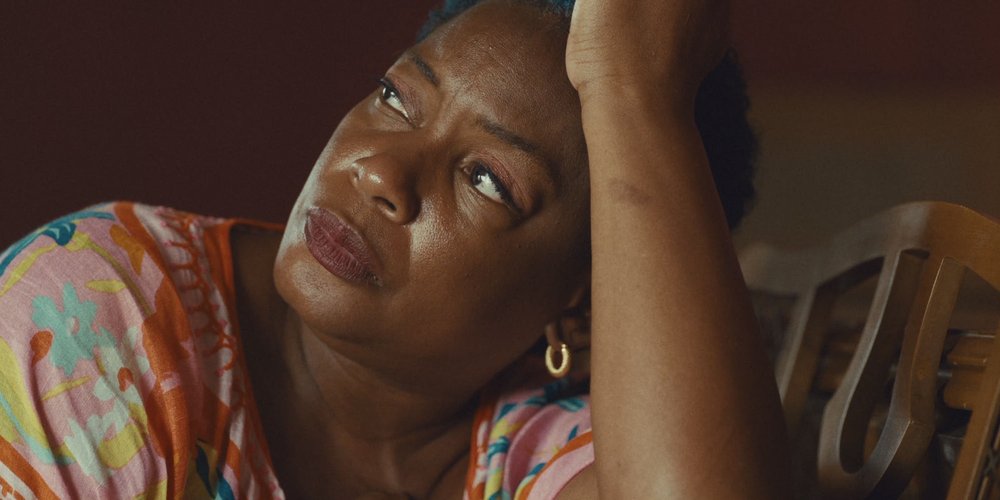
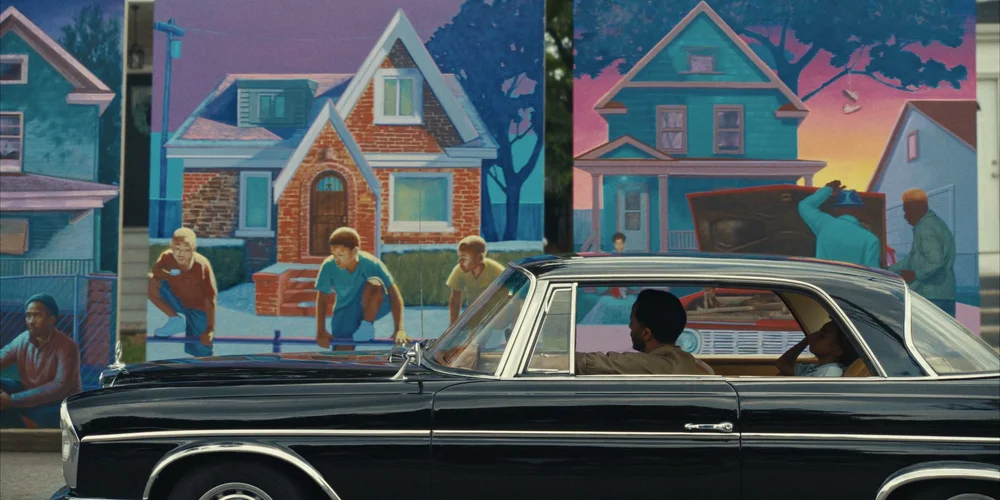
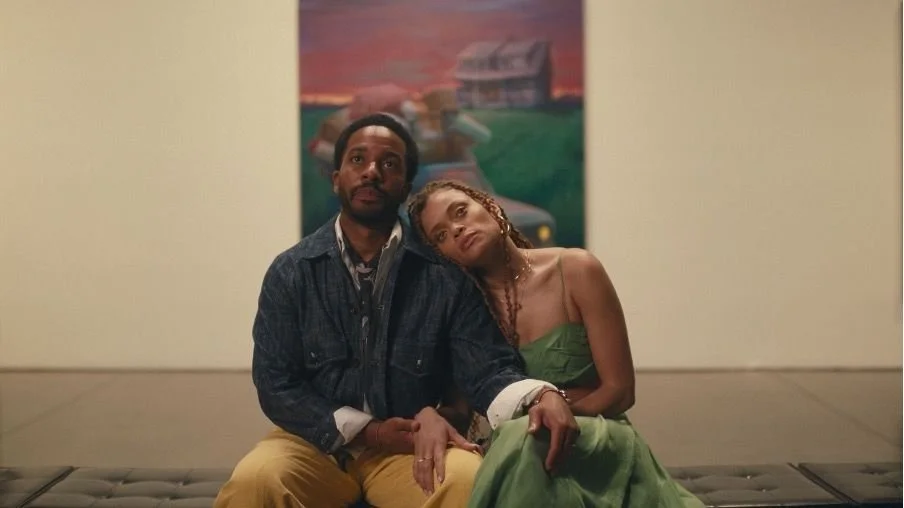

LOGO DESIGNED BY MEENTS ILLUSTRATED (#1238)
from Review Blog https://ift.tt/KP2uzZb







No comments:
Post a Comment